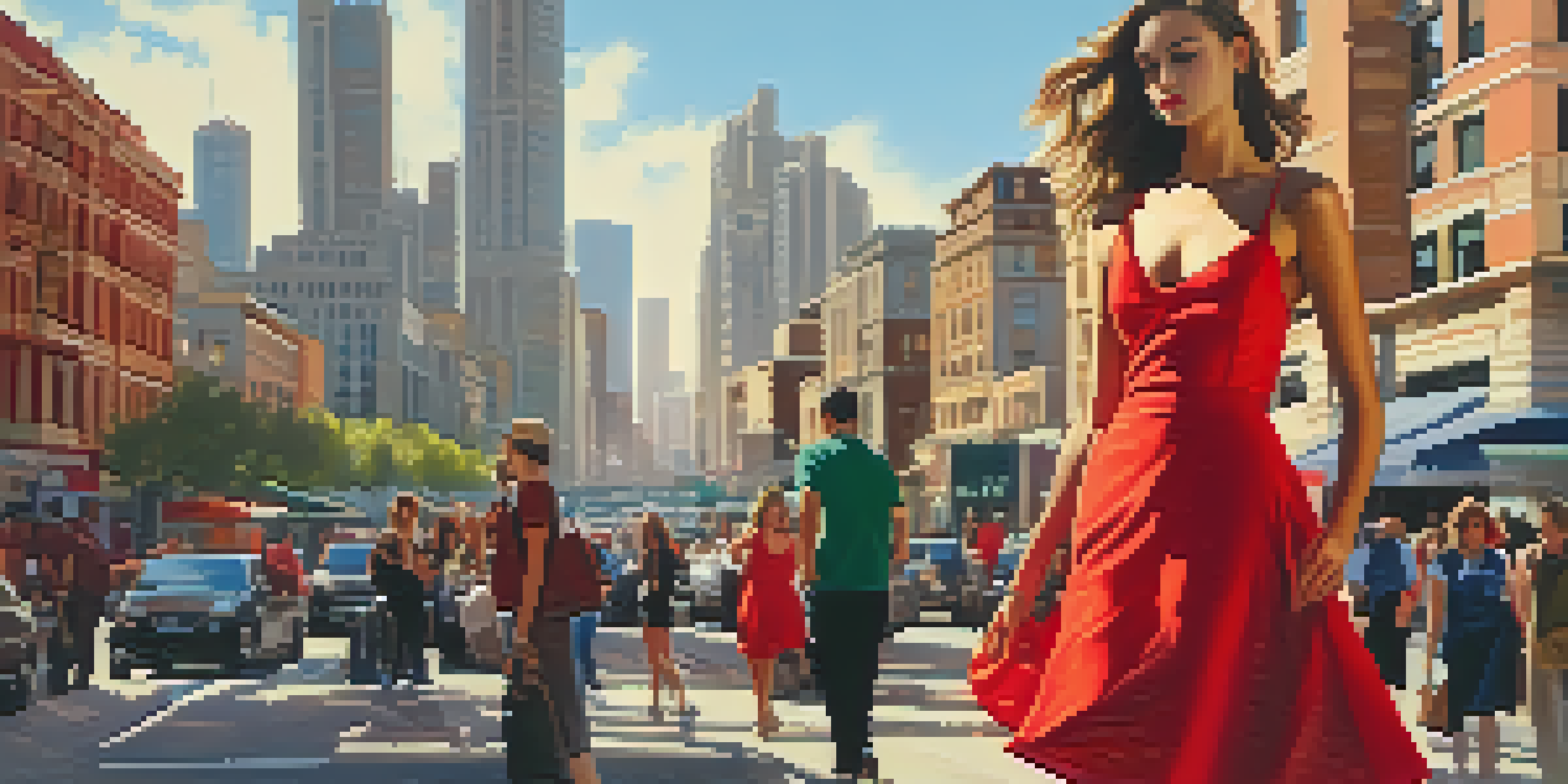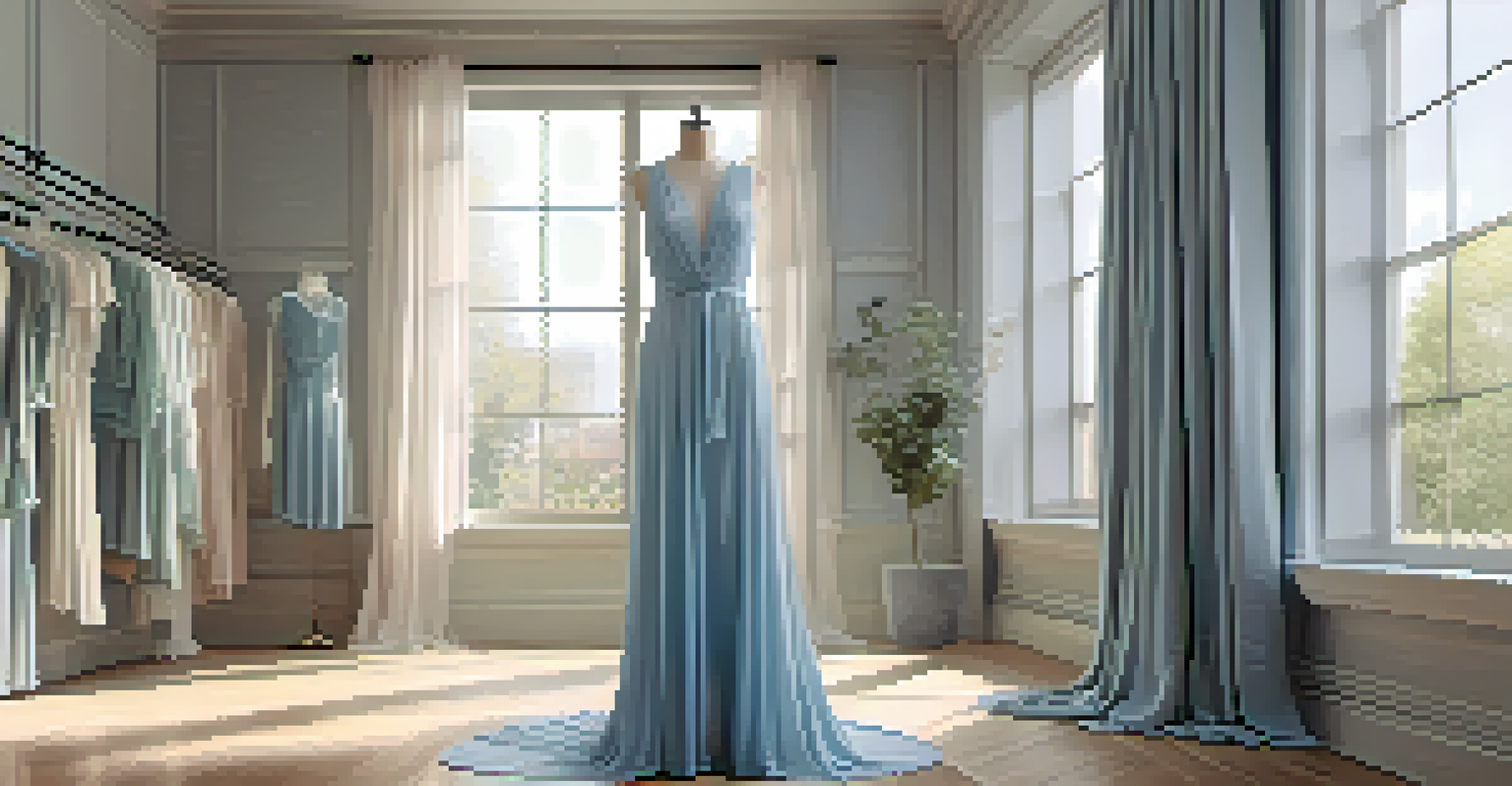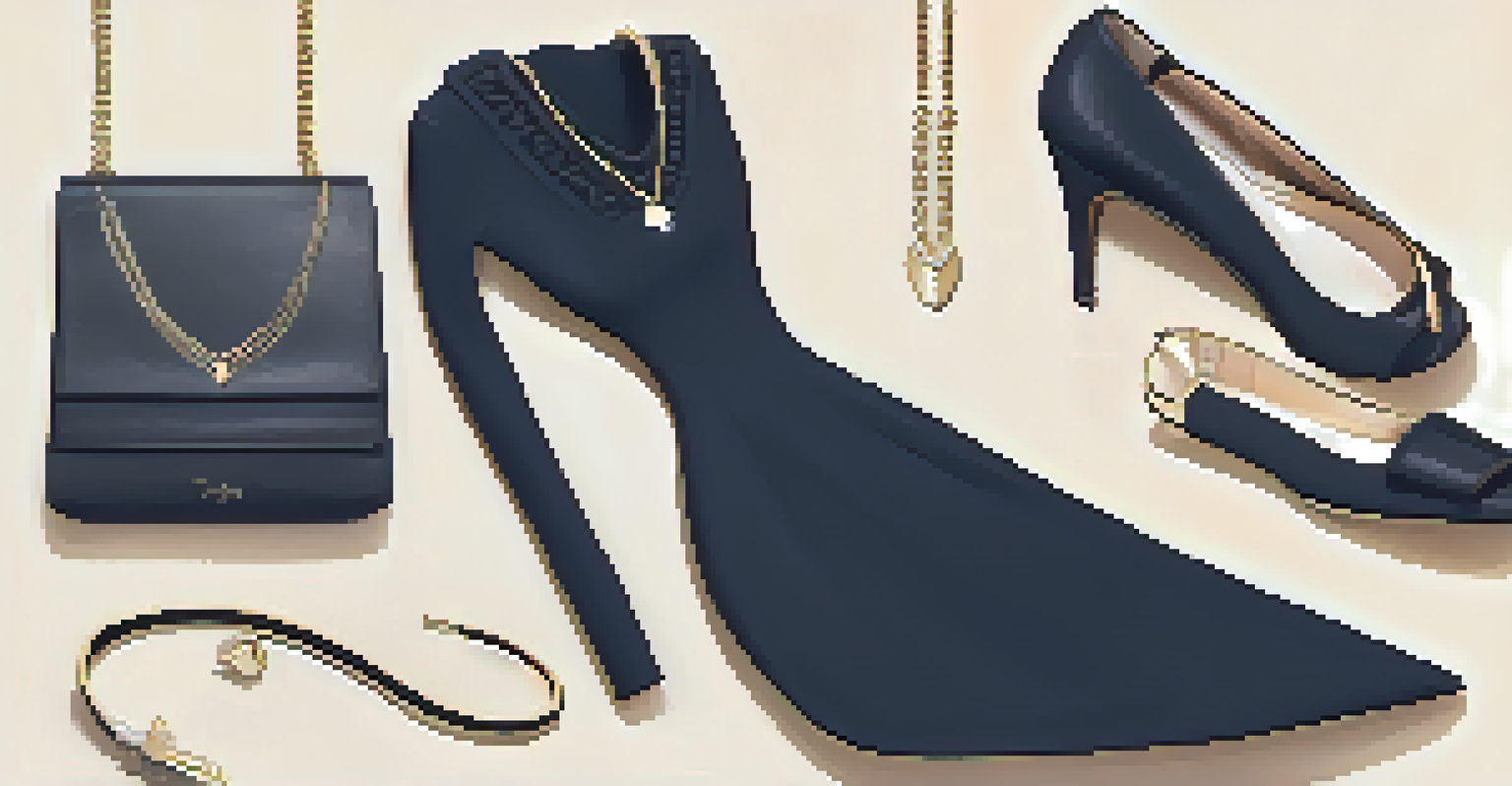The Role of Color Psychology in Fashion Consumer Choices

Introduction to Color Psychology in Fashion
Color psychology examines how different colors affect human emotions and behaviors. In fashion, this translates to how consumers feel about certain clothing items based on their colors. For instance, a vibrant red dress might evoke feelings of excitement, while a soft blue shirt could promote calmness.
Colors, like features, follow the changes of the emotions.
Understanding this relationship is crucial for fashion brands aiming to connect with their audience. By strategically using colors, they can create an emotional response that encourages buying. This emotional connection is often the difference between a casual browse and a purchase.
As we delve deeper into specific colors and their meanings, it becomes clear how vital color choices are in influencing consumer behavior. The impact is both subtle and profound, shaping not just individual preferences but also broader fashion trends.
The Meaning of Warm Colors in Fashion Choices
Warm colors, like red, orange, and yellow, are often associated with energy and enthusiasm. In fashion, these colors can create a sense of urgency or excitement, encouraging consumers to take action. For example, a bright red top may draw attention and make the wearer feel confident and bold.

Brands often leverage warm colors in marketing campaigns to stimulate emotions and drive sales. Think of a vibrant advertisement featuring a sunny yellow dress—it’s designed to evoke feelings of happiness and positivity. This emotional appeal can significantly influence a consumer's decision-making process.
Colors Shape Consumer Emotions
Color psychology plays a crucial role in influencing how consumers feel about fashion items, directly impacting their purchasing decisions.
However, while warm colors can attract attention, they can also be overwhelming if overused. Striking the right balance is essential for brands to ensure that the emotional response aligns with their overall message and product offerings.
The Impact of Cool Colors on Consumer Behavior
Cool colors, such as blue, green, and purple, tend to evoke feelings of calmness and tranquility. These shades are often favored in fashion for their ability to create a soothing effect. For example, a soft blue dress can convey serenity, making it an appealing choice for casual outings or professional settings.
The psychological impact of color is profound; it influences how we perceive our environment and make decisions.
In the fashion industry, cool colors can also promote trust and stability, which is crucial for brands looking to establish loyal customer relationships. A company that uses navy blue in its branding may be perceived as reliable and professional, influencing consumer choices.
Moreover, cool colors can be versatile, fitting various styles and occasions. This adaptability makes them a popular choice for both consumers and designers, as they can appeal to a wide range of preferences and moods.
The Role of Neutrals in Fashion Consumer Preferences
Neutral colors like black, white, gray, and beige serve as a canvas for more vibrant hues. They are often associated with sophistication, elegance, and timelessness. For instance, a classic black dress is a staple in many wardrobes, symbolizing versatility and chicness.
Neutrals can also enhance the appeal of brighter colors when paired together. A pop of color against a neutral background can draw attention without being overwhelming, making it a popular choice among fashion designers. This combination helps consumers feel more comfortable experimenting with bolder styles.
Cultural Context Influences Choices
Different cultures assign unique meanings to colors, which can significantly affect consumer preferences and brand marketing strategies.
Furthermore, neutrals have the advantage of being seasonless, allowing consumers to wear them year-round. This longevity in style often leads to more sustainable purchasing decisions, as buyers invest in pieces that will endure beyond fleeting trends.
Color Trends and Their Influence on Fashion Consumption
Color trends in fashion are often set by cultural events, seasons, and influential figures. For example, Pantone's Color of the Year can significantly impact what colors consumers choose to wear. When a vibrant hue is declared trendy, it can create a ripple effect across the market, leading to increased demand for that color.
Brands that stay ahead of these trends can position themselves favorably within the competitive landscape. By tapping into emerging color trends, they can attract trend-conscious consumers eager to refresh their wardrobes. This strategic alignment with current trends can lead to higher sales and brand visibility.
However, it’s essential for brands to balance following trends with their unique identity. This balance ensures that while they appeal to consumer preferences, they remain true to their brand values and aesthetic.
Cultural Significance of Colors in Fashion Choices
Colors hold different meanings across cultures, influencing fashion choices in unique ways. For instance, white is often associated with purity in Western cultures but can signify mourning in some Eastern traditions. These cultural associations can impact how consumers perceive and choose clothing.
Fashion brands that understand these nuances can tailor their marketing strategies to resonate with diverse audiences. For example, a brand may introduce a line of clothing that acknowledges cultural color preferences, thereby enhancing its appeal in various markets. This cultural sensitivity can foster deeper connections with consumers.
Warm and Cool Colors Drive Action
Warm colors like red and orange create excitement and urgency, while cool colors like blue and green promote calmness and trust in fashion choices.
Moreover, as the fashion industry becomes increasingly globalized, awareness of these cultural significances is vital. Brands that celebrate and respect cultural diversity through their color choices can distinguish themselves in a crowded marketplace.
The Psychological Effects of Color on Fashion Purchases
The psychological effects of color can significantly influence purchasing decisions. For example, studies have shown that consumers are more likely to buy products that are presented in colors that elicit positive emotional responses. This means that the right color in a fashion advertisement or storefront can lead to higher sales.
Moreover, colors can affect how long a consumer spends looking at a product. Bright, engaging colors might catch attention quickly, while softer hues may encourage longer consideration. This dynamic can play a crucial role in how consumers interact with products in-store or online.

Understanding these psychological effects allows brands to create more effective marketing strategies. By aligning color choices with the desired emotional response, they can enhance the likelihood of conversion and foster brand loyalty.